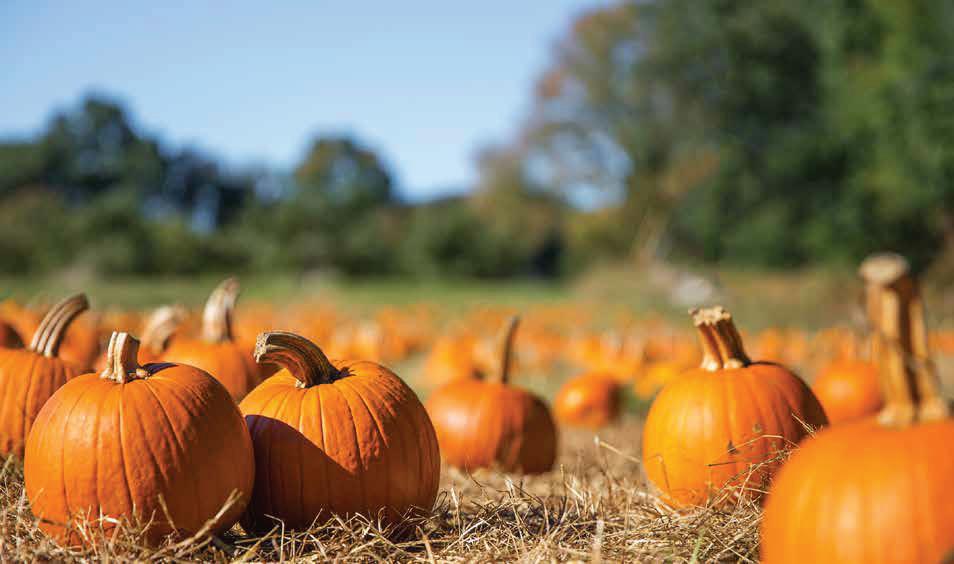
3 minute read
Expert guidance for your floral arrangements
Play by the design rules, says one local grower and expert party hostess, but the less structured and less fussy your flower arrangement, the more pleasing is the table focal point
Kathryn Everett has a lot going on this fall season. Out in her garden, she can barely keep up with the growth from late summer rains and early fall warmth.
Advertisement
The flowers are head-high, and the autumn vegetables she grows for chef Fabio Trabocchi’s Fiola in downtown Washington, D.C., are ripening on the vine in every row of her tiered beds at her family’s farm along the Rappahannock River near Hume.
“I love proving you can do agriculture sustainably,” says Everett as she gathers flowers for a bouquet for a big family meal that night. “When we bought this farm in 2018, we wanted to work with the local ecology, make natural meadows, no herbicide, native landscapes. We’re part of a grassland bird study.
“Everything is about sustainability and a natural landscape.”
Everett says the home floral arrangement should stay native just as well. She snips a dahlia and some late zinnias along with three fronds of ornamental grass to bring to a big work table to create an informally formal bouquet.
“That’s what you’re going for,” she says as she trims the bottoms of each flower stalk a second time before artfully placing it in a vase. “Not fussy, but something that matches you and your décor and your personality.”
There are a few rules of engagement when it comes to flower arrangements, especially for a dinner table, when seated conversation and food are vital to a party’s success. 1. Keep it low: Use a tall element or two in a dinner table centerpiece, but you want people sitting across from one another to be able to see each other’s faces. 2. Vary your vases: A single flower can make a powerful statement in a handsome decorative vase, or use a plain vessel – even a mason jar or a kitchen cup – when using more flowers and other elements. 3. Start with green: Snip leaves from the bottoms of your flowers (they’d cloud the water in your vase and make the arrangement last a shorter time); arrange them, facing out, around the vase first, or snip evergreen leaves from other plants in your yard to ring your vase. 4. Add flowers: Stay within the same color palette (yellow, orange, red are obvious fall choices that work well together) or go monochrome and use multiple flower varieties in a single color. Start with your tallest flower or flowers in the middle of the arrangement, then fill in shorter and shorter flowers around the edges.
If your centerpiece will be on the side of a table, or against a wall, use more of a stairstep arrangement. 5. Add fun stuff: An arrangement is a blank canKathryn Everett says working with a complimentary color palette and a variety of textures makes the messy-but-pulledtogether centerpiece a winner, every time.
vas, so add any textured item that works with your décor. A found feather or two can be put in with the flowers, or grab some wheat stalks or overripe tall native grasses that have formed seedheads (available everywhere outside) and garnish where the added item will add to, not detract from, the green base and flowery color pop. 6. Careful about scent: Not many fall flowers have much scent, but if you’re using your centerpiece for a dinner or formal meal, you don’t want to overpower your food with floral scent.
Farm & home essentials. Hometown pricing. Outstanding service.
Marshall 540-364-1533 8222 E Main St







